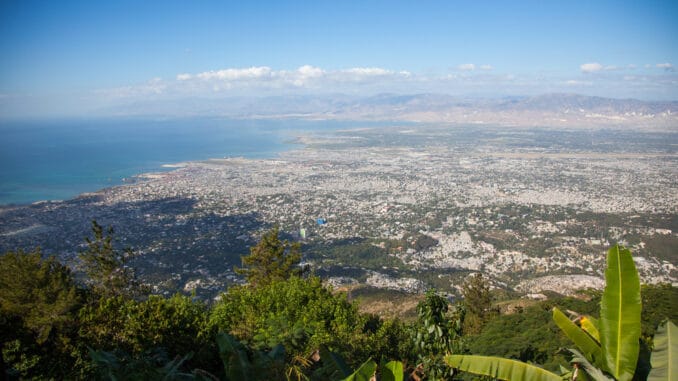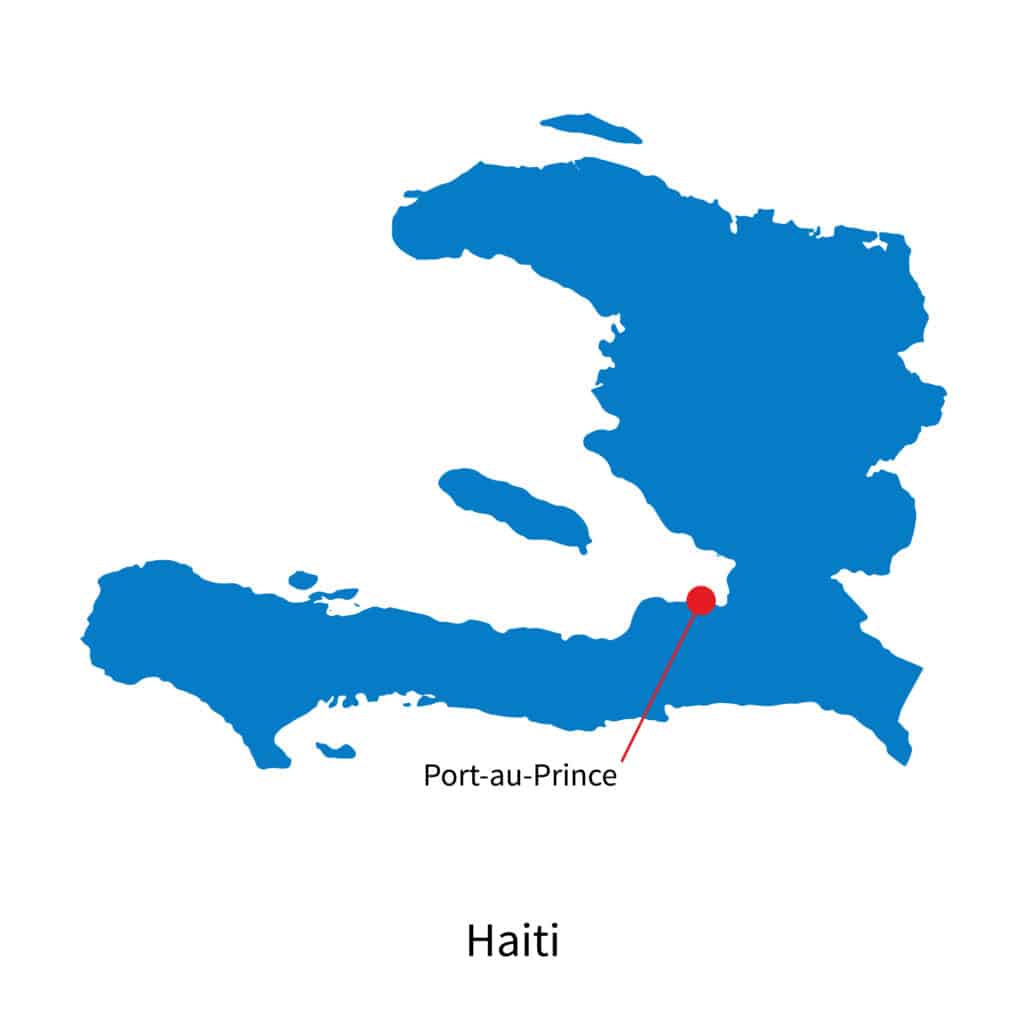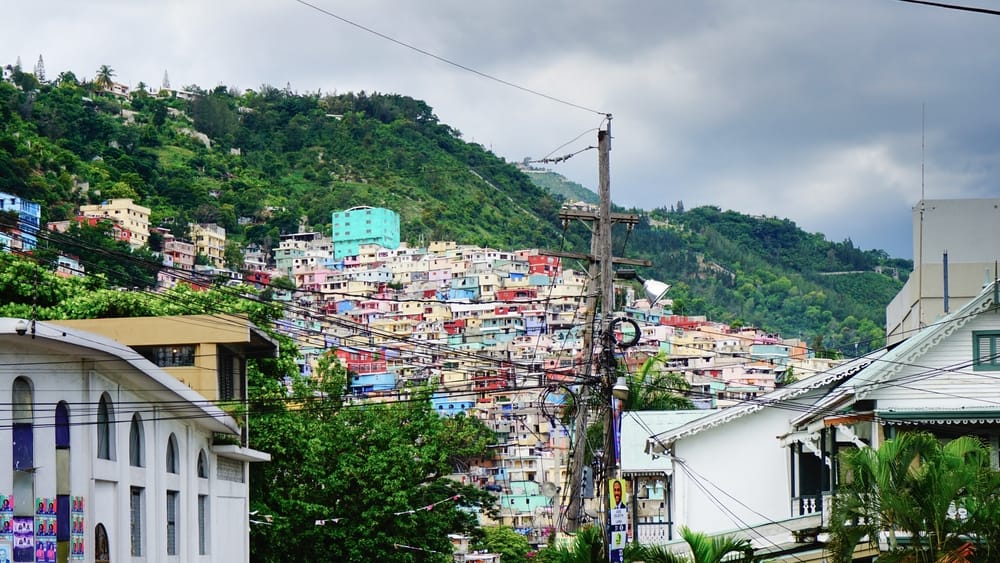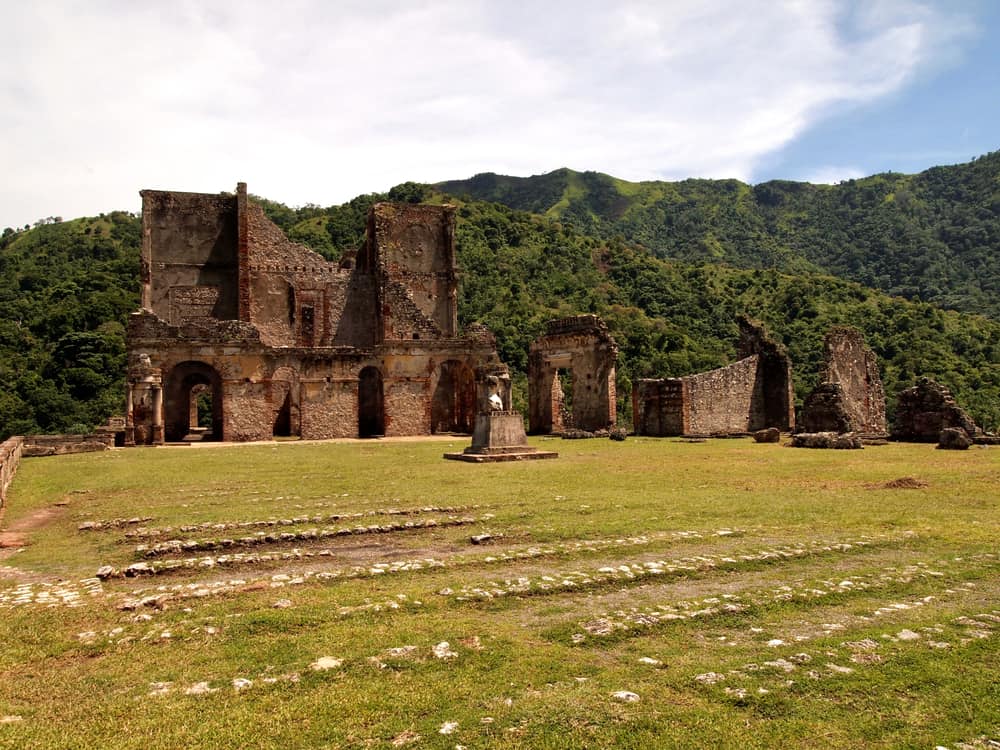
The capital of Haiti is Port-au-Prince – a port city located on Haiti’s western coast along the Gulf of Gonâve.
The city is Haiti’s most populous with 2.8 million residents as of 2022, though due to the country’s crippling poverty and the rapid appearance of slums along the city’s outskirts, it is estimated that the actual population of the city is much higher. Port-au-Prince is the second largest city in the West Indies, second only to Santo Domingo of the Dominican Republic.
The city is the center of industry for the country’s economy, with Haiti’s chief exports being vegetable oil, cocoa, dates, clothing, and scrap metal. Unemployment is extremely high in Haiti, contributing to the country’s extreme poverty as the poorest country in the Western Hemisphere.
Read on to learn more about Port-au-Prince and its unique history.
Where is the Capital of Haiti Located?

Port-au-Prince lies in a bay along the island’s western coast, sheltered by the Gulf of Gonâve and protected from the open sea by La Gonâve – a small island off Haiti’s mainland – and is considered the largest Hispaniolan satellite island.
While Port-au-Prince is located in a calm bay that provides ease for shipping and fishing boats, the island – especially the region where the city lies – is frequently subjected to violent earthquakes, the most recent being in January of 2010 with a score of 7.0 that killed hundreds of thousands of Haitians and leveled large parts of the city.
The city was first designed in a grid pattern by the early French colonists and still retains this design today.
Brief History of Port-au-Prince

Port-au-Prince has gone by many names and has been ruled by several nations throughout the years, so here we’ll break down the most significant periods in the city’s history.
Indigenous Population
The Taino people were the first settlers of the Port-au-Prince region, believed to have arrived in Haiti around 2600 BC in canoes from Venezuela. This indigenous group was one of the largest in the West Indies, inhabiting multiple Caribbean islands including Haiti, Barbados, and the Dominican Republic.
The Taino used the plains and the mountains surrounding Port-au-Prince for hunting and gathering the native plants and animals in the region. Due to the constant threat of the cannibalistic and warlike Caribs, another indigenous group that warred with the Taino throughout the West Indies, the Taino avoided settling too close to the coast and opted instead closer to the mountains and forests, where they’d be better hidden.
When the Spanish arrived in the 1490s, the Port-au-Prince region and the Taino people were under the rule of their chief, Bohechio. Within 30 years of the arrival of the Spanish, the indigenous Taino peoples had all but been eradicated by violence and disease.
European Occupation
Christopher Columbus was the first European to arrive in Haiti, which was then called Hispaniola. The Spaniards quickly settled on the island, setting up Port-au-Prince as a primary settlement near the coast because of its proximity to the water.
The Spaniards overthrew the indigenous Taino population in 1503. Bohechio, the Tainan chief, died without children so his sister Anacaona succeeded his rule. Anacaona’s rule was a short and tragic one, as the last chief of the Haitian Taino.
The Spaniards wiped out the remaining Taino in a single incident in 1503, when Spanish governor Nicolas Ovando invited the local tribal leaders – including Anacaona – to a feast, and then slaughtered them when the tribal leaders were intoxicated. The Spaniards spared Anacaona from the initial mass execution before hanging her in a public execution shortly afterwards.
French pirates – known as flibustiers – gained control of the Port-au-Prince region around 1650, even when the rest of Haiti remained under Spanish control. The flibustiers built a hospital in the Port-au-Prince region and named it Hôpital. The city became a true French colony to the Spanish settlers’ chagrin, and the Spanish government tried and failed on several occasions to rid the city of the French pirates.
Port-au-Prince fell under British occupation in the 1790s and finally became an independent nation in 1804, with Port-au-Prince – already the island’s largest city – named as the capital.
When did Port-au-Prince Become the Capital of Haiti?

Port-au-Prince grew significantly in the 1700s under control of French pirates and was officially named the capital of Haiti in 1804 when the nation gained independence.
Why is Port-au-Prince the Capital of Haiti?
Port-au-Prince had started as a Spanish settlement in the late 1490s, but it wasn’t until the region became a French territory when it grew to a sizable city.
First called Hôpital by the French pirates who took control of the region, the city grew significantly under French control and seemed a natural choice for the capital city when Haiti established its independence in 1804.
Best Places to Visit in Port-au-Prince
Unlike many other island nations in the West Indies, Haiti isn’t known for its tourism. The country’s status as the poorest nation in the Western Hemisphere contributes to the lack of tourism, as well as not fully recovering from the negative impact of the HIV/AIDS epidemic in the 1980s and 1990s.
However, if you do find yourself visiting this Caribbean nation, there are a few points of interest to keep in mind.
- National Pantheon Museum (Musee du Pantheon National Haïtien) – this incredible museum has beautiful architecture and pays tribute to Haitian heroes throughout history.
- Papillon Enterprise – this business features locally made Haitian jewelry and other goods to stimulate the economy and encourage local artisans in their craft.
- Saint Anne Church – this historic building is well-preserved and dates back to the colonial era.
- The Bureau of Ethnology – explore Haitian history here and relax in its quiet, scenic gardens.
- Barbancourt Rum Distillery – this distillery is a must-see for rum connoisseurs everywhere, with tours available of the historic factory.
- Atis Rezistans – this region of Port-au-Prince is marked by the unique sculptures of various Haitian artists.
- The Iron Market (Marché en Fer) – experience colorful Haitian culture with an unforgettable visit to the largest market in Port-au-Prince.
